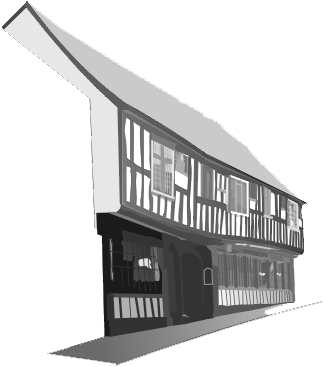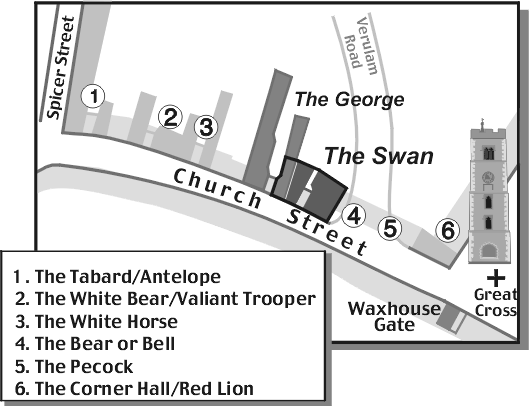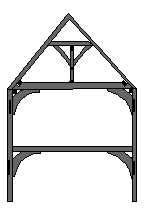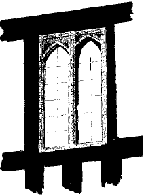|
Back to Archaeology & History Contents
The Tudor TavernGeorge Street
|
||||||
|
|
The oldest part of the Tudor Tavern, now frontin Verulam Road, was built around 1400 with a first floor hall and fine crown post roof. Who was responsible for the building is unknown; it may have been built by the Abbey, but in 1446 it formed part of the property of the Priory of St. Mary of Sopwell, one of the Abbey's local cells and was then known as the Swan In the 15th century the two storey jettied range along the street, consisting originally of unheated inn chambers, was built - this still contains one of the original windows, a rare survival in St. Albans. In the 16th century the windows of the street range were modified/replaced and a large brick chimney stack inserted in the hall range to provide heating. Around 1600 at least one internal wall was painted to imitate wooden panelling with panels of text above. Further changes were made in the 17th century. The ground floor fireplace of the hall range was provided with a finely carved wooden surround and later the windows of the upper storey along the street were replaced with the large rectangular leaded lights seen today |
|
|
It was around this time that Swan changed its sign to become the Kings Head, probably as a result the Restoration of the Monarchy in 1660. It was recorded in 1672 as "formerly the Swan", although the property had become divided, for in 1657, it consisted of a messuage divided into two tenements which abutted on the west on the George. The Kings Head had closed as an inn before 1790. By 1818 the property was two houses with shops and gardens and in more recent times the building was used for a variety of functions; cash stores, tallow chandler and candle factory, oilman. From 1906 it was used by Mr. Mayle, antique dealer and his wife. Their long use of part of the building, also used as a photographic studio, and by Stanleys Surgical Supplies, gave rise to the name Mayles Corner, still used by some of the older "Albanians". The building resumed a more convivial function in 1963 after its acquisition and restoration by the City Council who decided that its use as licensed premises would allow people a chance to see the interior of this fine old building.Like other portions of the "family silver" it was subsequetly sold by the council in .....
The George
The George was in existence in 1401, when it was known as the George upon the Hupe. In the 15th. century this was also part f the possessions of "Sopwell Nunney" and in 1446 was leased by John Duke of Exeter, the Lord High Admiral of England. At that time the annual rent was 6 shillings (30p). In 1484 the then proprietor, Thomas Hethnes, was granted a licence by the Abbot allowing the use of an oratory or chapel in the inn to be used fro the celebration of low mass for the "benefit of such great men, an nobles and others, as should be lodged at the Inn". A reflection of its importance at the time.
Henry's
Token In 1666 Henry Gladman, the then
owner, issued a halfpenny token, as did other
traders at this time when there was a shortage of
small change. Henry's token shows St. George and
the Dragon.

In the early 19th century there was a coach service from the George to the Ram Inn at Smithfield in London. This left a 7 am and returned at 2pm in winter and 2.30pm in the summer, except on Sundays. In 1815 the accommodation was recommended for commercial travelers and the home brewed ale judged excellent!
Later in the century the inn became known as a hotel, after the fashion of the time, a term first used in St. albans in 1825. The George Hotel closed in 1932/3.
Back to Archaeology & History Contents
![]()
Go to the Verulam Arms, the White Hart , The Boot, or the Six Bells



